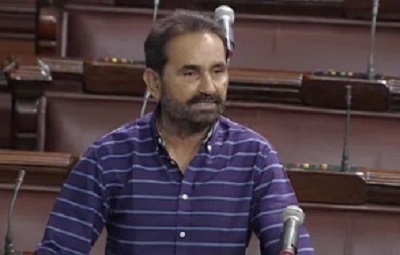Ahmedabad, (Asian independent) Gujarat unit Congress president and Rajya Sabha member, Shaktisinh Gohil, launched an attack on the Bharatiya Janata Party (BJP)-led state government in Gujarat on Monday, holding them responsible for the flood situation in the low-lying areas of Bharuch district.
The crux of the controversy lies in the massive release of water from the Sardar Sarovar Dam on the Narmada River, which Gohil claims led to the devastating flooding.
According to Gohil, over 17 lakh cusecs of water were discharged from the Narmada Dam in Bharuch on a single day, totaling a staggering 18.2 lakh cusecs, causing severe water-logging in the region.
Buildings were submerged up to the second floor, farms were destroyed, and losses were significant.
Gohil did not mince words, stating: “All this happened because September 17 is the Prime Minister’s birthday. To mark the occasion, the dam was filled, and the Chief Minister performed a pooja (ritual).”
“The turbines were kept idle. Had the water been released gradually, this disaster could have been avoided, sparing people from immense suffering.”
He went on to express his doubts about whether even the Prime Minister was aware of these actions, emphasising that such gimmicks should not endanger people’s lives and urging the BJP government to exercise more caution in the future.
In response to these allegations, Cabinet Minister Rushikesh Patel countered Gohil’s claims, stating that the water release from a dam in Madhya Pradesh exceeded the stipulated levels and coincided with heavy rainfall due to a low-pressure system in the Bay of Bengal.
This resulted in a surge of water along the route from the Madhya Pradesh dam to the Sardar Sarovar dam in Gujarat.
Patel clarified that the water release from the Omkareshwar dam in Madhya Pradesh had been increased from 68,000 cusecs to 4.53 lakh cusecs at 3 a.m.
After moving for 8 to 12 hours, the water reached the Sardar Sarovar Dam, where additional rainwater added to the already substantial inflow.
This resulted in a flood inflow of 5.31 lakh cusecs, which reached a peak of 22 lakh cusecs at midnight.








